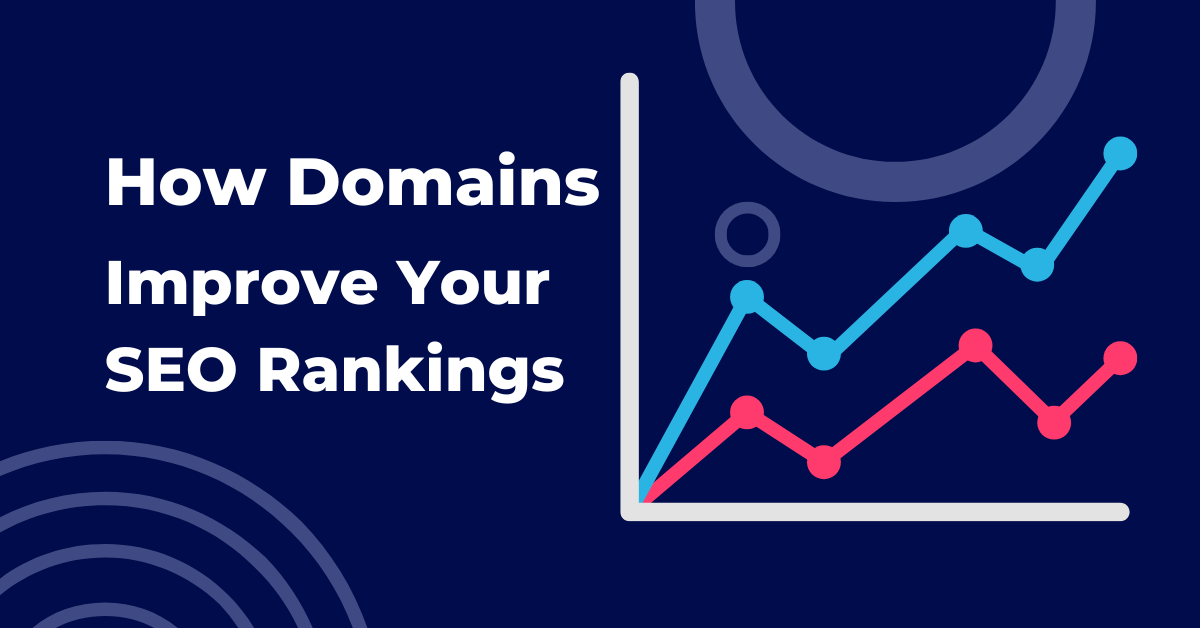Why Your Domain Name Matters for SEO & Branding
Your domain name serves as the foundation of your brand’s digital identity. It shapes how your business is perceived, how customers find you, and how search engines rank your website.
Choosing the right domain name is a strategic decision that can influence brand credibility, search visibility, and long-term marketing success.
In today’s digital landscape, businesses that select SEO-friendly, brandable domain names gain a significant competitive advantage. A well-optimized domain enhances brand recognition, trust, and search engine rankings, leading to higher organic traffic and better user engagement.
With Google continuously refining its ranking algorithms, companies must ensure that their domain names align with best SEO practices and branding strategies to stay ahead of the competition.
Must Read: Brand Name vs. Business Name vs. Domain Name: Why Getting It Wrong Can Hurt Your Brand
We study the impact of domain names on SEO and branding with real-world case studies and actionable insights to help business owners and brand managers make smarter domain decisions.
How Domain Names Impact SEO Rankings
A domain name plays a crucial role in how search engines crawl, index, and rank your website. While keywords in domains used to have a stronger influence on rankings, Google’s algorithm updates have shifted focus toward user experience, content quality, and brand trust. However, the right domain structure can still positively impact SEO performance when used strategically.
1️. Branded Domains vs. Keyword Domains: Which One is Better for SEO?
In the past, exact-match domains (EMDs) such as BestLoans.com or BuyShoesOnline.com were favored by search engines due to their keyword relevance. However, Google’s algorithm updates now prioritize brand trust and domain authority over keyword stuffing.
While keyword domains can still provide SEO value, they must be supported by strong content, backlinks, and brand reputation to rank well. Branded domains, such as Nike.com or Tesla.com, tend to outperform EMDs in long-term rankings because they generate more organic brand searches, social engagement, and direct traffic—all of which contribute to SEO success.
Your domain affects everything from search rankings to customer perception. Explore more ways brands fall short in our Top 10 Domain Mistakes Guide.
2️. Domain Length & Readability: Why Shorter is Better
Research from Backlinko shows that shorter domain names perform better in search rankings. Concise domains are easier to type, remember, and share, leading to higher engagement and click-through rates (CTR).
For instance, Amazon.com is more effective and memorable than BestOnlineShoppingStore.com, making it easier for customers to recall and visit frequently. A short and brandable domain enhances user experience, which indirectly influences Google rankings.
3️. Domain Age & Authority: Does an Older Domain Help SEO?
There is a common belief that older domains rank better than newer ones due to their established authority. While domain age alone is not a direct ranking factor, websites with a longer track record of high-quality content and backlinks tend to perform well in search results.
A new domain can still rank competitively if it follows SEO best practices, such as building authoritative backlinks, creating valuable content, and maintaining a strong technical SEO structure.
4️. Subdomains vs. Subdirectories: Which is Better for SEO?
Google treats subdomains (blog.brand.com) as separate entities from the main website, meaning they require additional SEO efforts to rank well. On the other hand, subdirectories (brand.com/blog) consolidate SEO authority within the same domain, making it easier to manage and improve rankings.
A well-known example is HubSpot, which transitioned from blog.hubspot.com to hubspot.com/blog to consolidate rankings and enhance domain authority. Businesses should consider using subdirectories over subdomains when possible to maximize SEO benefits.
How Domain Names Impact Branding & Digital Marketing
A domain name plays a critical role in brand perception, user trust, and marketing success. It represents your business’s identity online and can influence customer confidence and engagement. Choosing the right domain name ensures that your brand is easily recognized, remembered, and trusted by your audience.
1️. The “.COM” Factor: Does It Still Matter?
While there are many new domain extensions available today, .COM remains the most widely recognized and trusted. According to a 2023 survey by GrowthBadger, .COM domains are 33% more memorable than other extensions. Users tend to default to .COM when searching for a brand, making it the preferred choice for businesses.
However, alternative TLDs such as .AI, .IO, .CO, and .Tech have gained popularity in specific industries. For instance, tech startups and AI companies often use .AI and .IO, while e-commerce brands may opt for .Store or .Shop.
2️. Brandable Domains vs. Keyword Domains: Which One Wins?
Branded domains provide long-term recognition, trust, and marketing flexibility, whereas keyword-based domains may struggle with long-term credibility.
For example, Nike.com is far stronger than a generic BuyRunningShoes.com domain. Additionally, companies like Tesla and Apple have invested heavily in securing premium branded domains, reinforcing their brand dominance in the digital space.
Case Study 1: Tesla.com
Tesla initially operated under TeslaMotors.com but later acquired Tesla.com for $11 million. Elon Musk confirmed this purchase on Twitter, highlighting the importance of brand-aligned domains in establishing credibility.
Case Study 2: Twitter.com – From Twttr.com to a Global Brand
When Twitter was first launched in 2006, the platform initially operated under the domain Twttr.com. This name was inspired by co-founder Jack Dorsey’s vision of a short, SMS-friendly communication platform, and it reflected the early internet trend of dropping vowels in brand names.
However, as the platform rapidly grew in popularity, the company realized that Twttr.com lacked clarity, branding power, and global recognition.
The missing vowels made it less intuitive for users to type, remember, and trust. To establish a stronger digital identity, Twitter secured Twitter.com, which aligned perfectly with its brand name and messaging.
Watch this video for more information on the story of Twitter.com

Key Takeaways from Twitter’s Domain Upgrade:
Brand Consistency Matters – Twitter’s transition from Twttr.com to Twitter.com reinforced its brand clarity and trust.
Ease of Use Improves Engagement – A complete, easily readable domain helped increase user adoption and credibility.
Long-Term Scalability – Twitter.com became a more marketable, international-friendly brand asset, allowing it to evolve into a major social media platform.
This case highlights the power of choosing a brandable, intuitive domain over a niche or gimmicky alternative. Businesses that invest in the right domain name early on can avoid costly rebranding in the future.
3️. The Impact of Domain Names on Click-Through Rates (CTR)
A domain’s length, clarity, and brandability influence CTR in search engine results. Users are more likely to click on trusted, simple, and recognizable domains than long, complicated, or spammy-looking URLs.
Google favors user-friendly domains in its ranking algorithms, meaning that businesses should focus on creating easy-to-read domain names that align with their brand.
Best Practices for Choosing an SEO & Brand-Friendly Domain
When selecting a domain name, businesses should consider both SEO performance and branding impact. The following best practices will help maximize domain effectiveness:
- Keep it Short & Memorable: Ideally, domains should be under 15 characters for easy recall.
- Prioritize .COM: If available, choose .COM as it remains the most trusted domain extension.
- Use a Brandable Name: Unique, creative names build long-term brand equity.
- Avoid Hyphens & Numbers: These make domains harder to read, type, and trust.
- Consider Acquiring Multiple Variations: Prevent competitors from registering similar names by securing different versions of your domain.
Pro Tip: Redirecting multiple domain variations using 301 redirects can consolidate SEO efforts and protect brand identity.
Your Domain is Your Digital Foundation
A domain name is not just a website address—it’s a powerful branding and SEO tool. The right domain can elevate your search rankings, increase brand recognition, and build customer trust.
Business owners should invest in a strategic, brandable domain that enhances both search engine visibility and long-term brand success.
Read this article: Commerce.com Sold for $2.2M – What This Means for Brand Owners & Business Leaders
Need help choosing an SEO-friendly domain?













